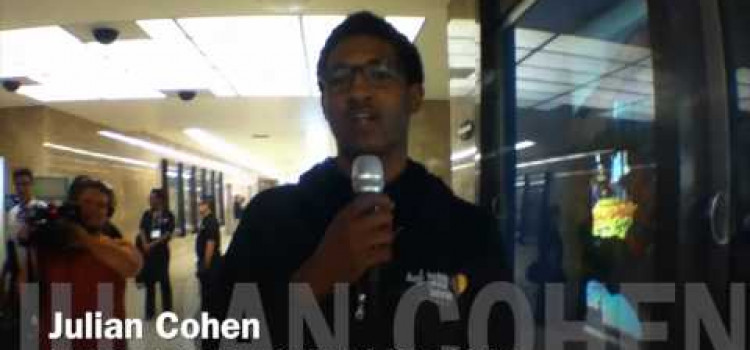

I got a call a couple of weeks ago from my friend Kenyon Davis, a staff organizer with the Alliance of Boys & Men of Color, a statewide coalition of change agents committed to improving the lives of California’s boys and young men of color. He told me he wanted me to come to the State Capitol in Sacramento to see the youth’s work. I immediately agreed without knowing what he really meant by “youth’s work” and embarked on a tiresome eight-hour trip from Long Beach to Sacramento in a bus that broke down every couple of miles.
Finally, in what seemed like an eternity, we arrived welcomed by a beautiful hotel room. I still had no real idea what to expect. The next morning at breakfast, we heard from a panel of young people who have directly changed the course of action in their own cities by advocating for better policies around restorative justice and gang injunctions.
During that time, I also read a letter given to us by California Endowment President and CEO Robert K. Ross encouraging us to fight for social issues we believed in and to always reflect on Trayvon Martin who he considered to be “sacrificed for a cause.”
On Wednesday, all the youth were given sweatshirt hoodies to wear in remembrance of Trayvon Martin. I put it on, and at that moment, the hoodie didn’t make me feel any more powerful or any less powerful. I realized that Trayvon was a regular person — just like me. When we all looked around, we didn’t see criminals — just young people fighting social injustice.
Over the course of those 3 days, I marched with my peers to the Capitol and met with legislators and local government leaders to talk about environmental justice, restorative justice and education. I had never in my life seen so many youth march to the Capitol to demand change.
I was in awe knowing that we had the chance to voice our thoughts to the legislators who run the state and paint a picture for them about how it feels to live with health issues, violence, low-wage jobs and under-funded schools.
I was also surprised to learn that the problems in our cities were happening all over California. We learned that young African-American men experience homicide rates 16 times greater than Latino young men and Latino boys, and young men are over four times more likely to suffer from post-traumatic stress disorder than white boys and young men, according to the RAND Corporation.
One phrase I heard government leaders say that I will always remember, “You own the Capitol. We work for you.” Going to Sacramento helped me learn that youth must create the change they wish too see.
VoiceWaves interviewed youth in Sacramento about what they learned at the State Capitol and what they hope to bring back to their cities.
